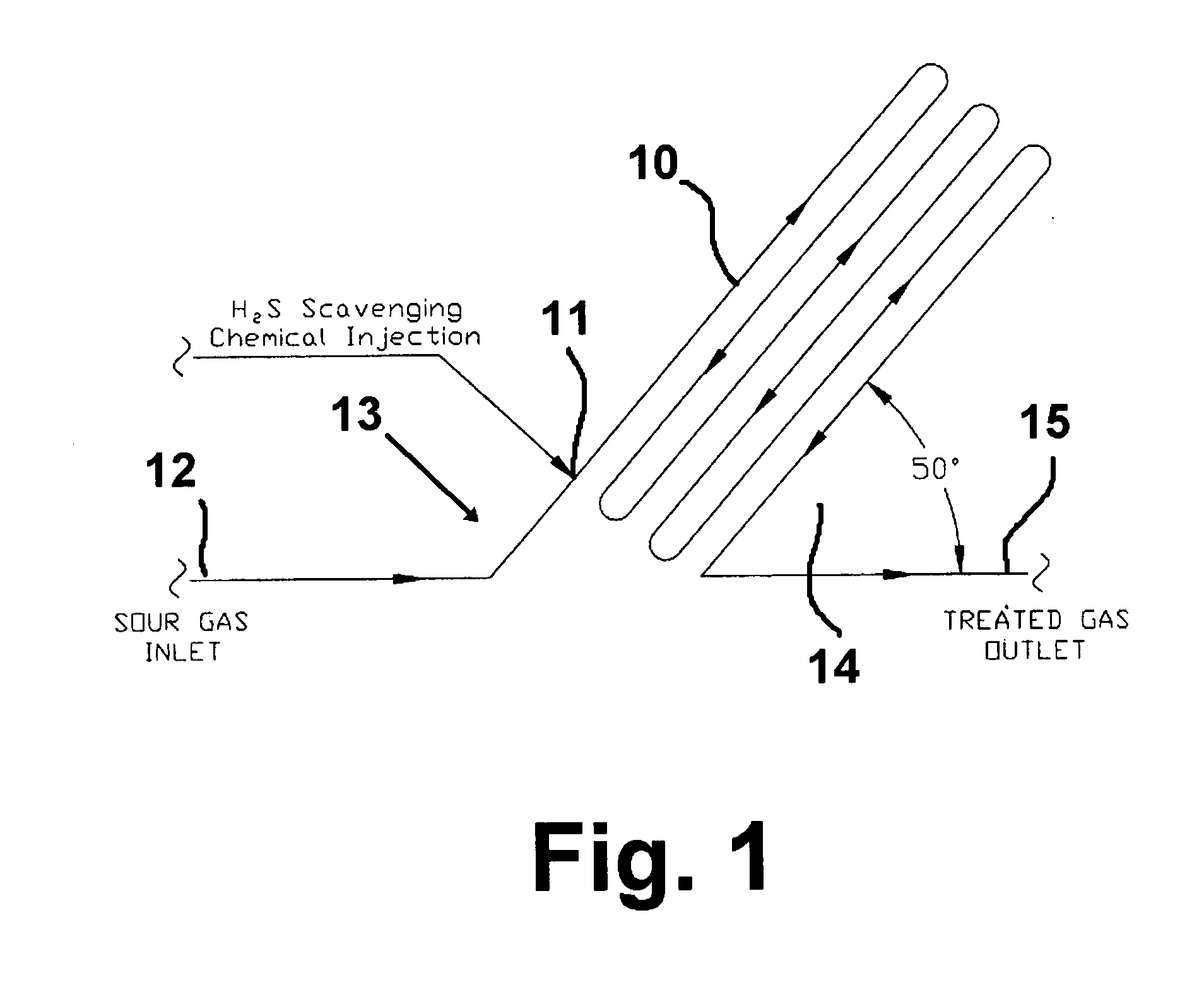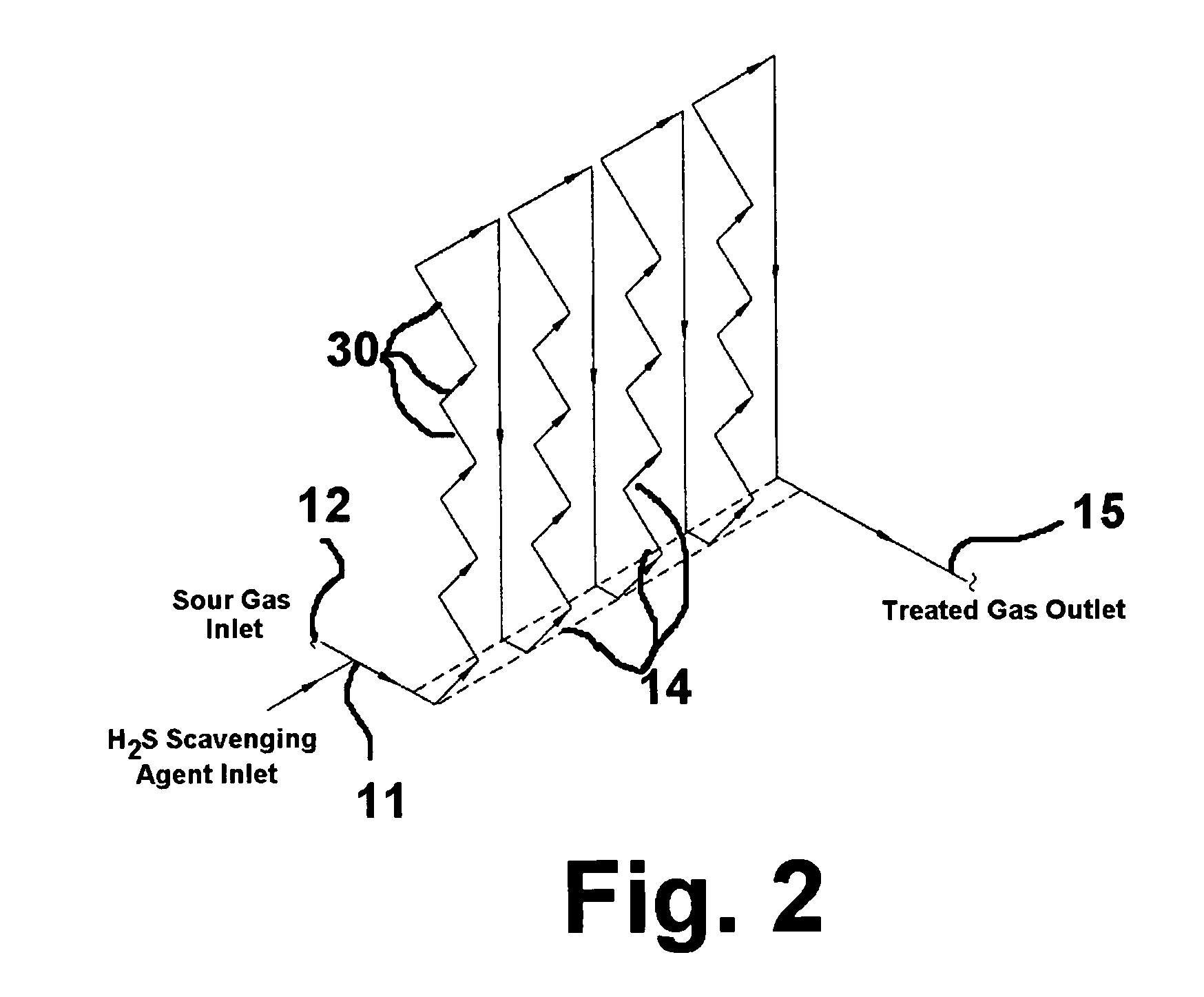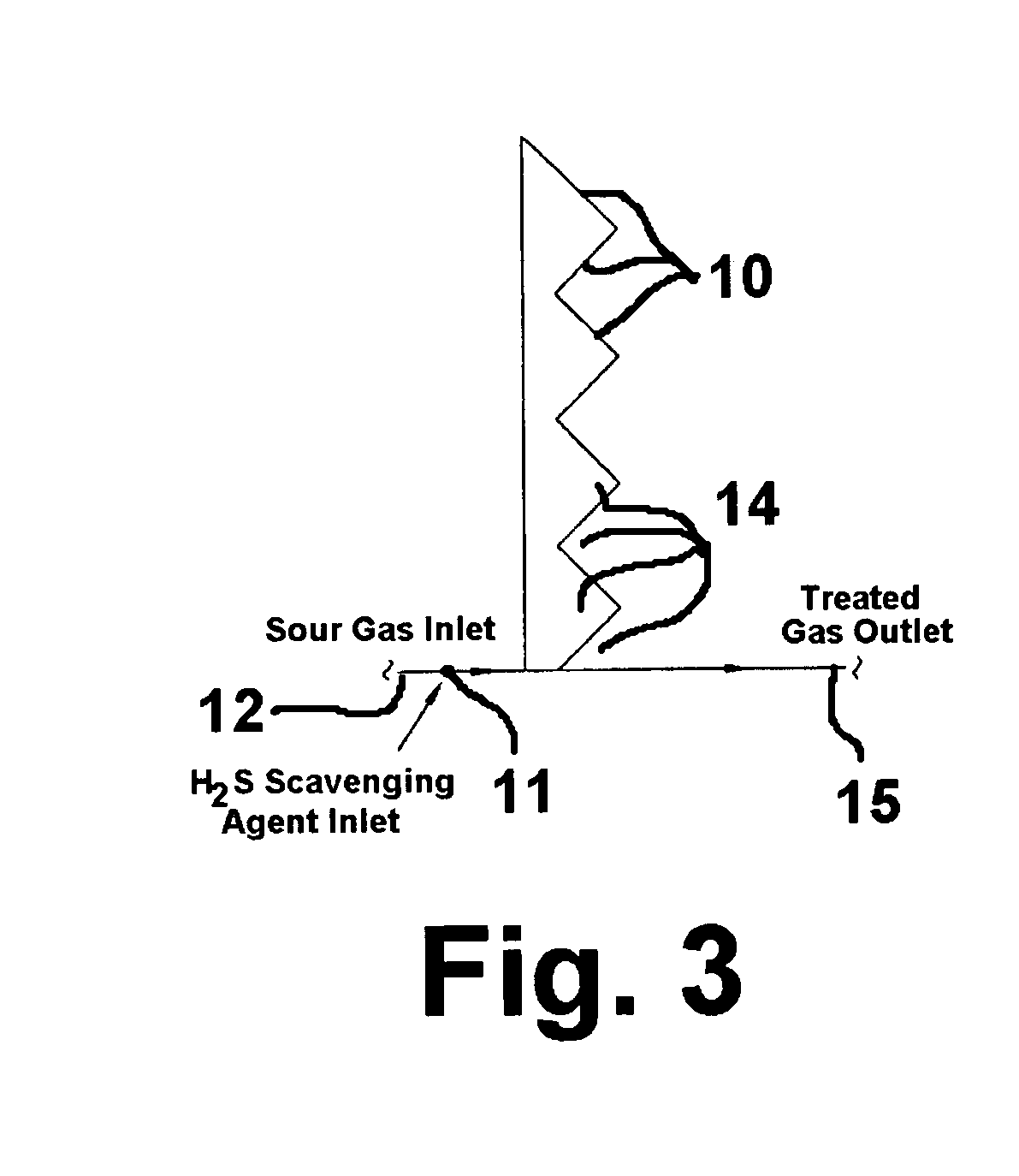H2S scavenging method
a scavenging method and h2s technology, applied in the field of h2s scavenging method, can solve the problems of affecting human, animal and plant life, affecting the economic feasibility of conventional amine sweetening, and the droplets produced by this mechanical method of atomization are generally larger than 15 microns in diameter
- Summary
- Abstract
- Description
- Claims
- Application Information
AI Technical Summary
Benefits of technology
Problems solved by technology
Method used
Image
Examples
Embodiment Construction
Definitions
[0021] As used herein, the term “flow channel” refers to any enclosed passage for transport of a fluid. Examples include pipes, tubes and spaced apart planar elements closed off on two opposed sides.
[0022] As used herein, the term “liquid stream” refers to a continuously flowing liquid or uninterrupted flowing liquid in contrast to liquid droplets or liquid droplet streams, which are considered to constitute a non-continuous or interrupted flow of liquid.
[0023] As used herein, the term “ultrasonic frequency” refers to a frequency that is above the audible range, typically considered to be about 20,000 Hz and above.
[0024] In accordance with one embodiment of the method of this invention, an H2S-containing gaseous stream is introduced into the vertically lower end of an inclined flow channel, resulting in an upward flow of the stream, and a liquid stream of an H2S scavenging agent is introduced into the flow channel proximate the vertically lower end of the inclined flo...
PUM
 Login to View More
Login to View More Abstract
Description
Claims
Application Information
 Login to View More
Login to View More - R&D
- Intellectual Property
- Life Sciences
- Materials
- Tech Scout
- Unparalleled Data Quality
- Higher Quality Content
- 60% Fewer Hallucinations
Browse by: Latest US Patents, China's latest patents, Technical Efficacy Thesaurus, Application Domain, Technology Topic, Popular Technical Reports.
© 2025 PatSnap. All rights reserved.Legal|Privacy policy|Modern Slavery Act Transparency Statement|Sitemap|About US| Contact US: help@patsnap.com



